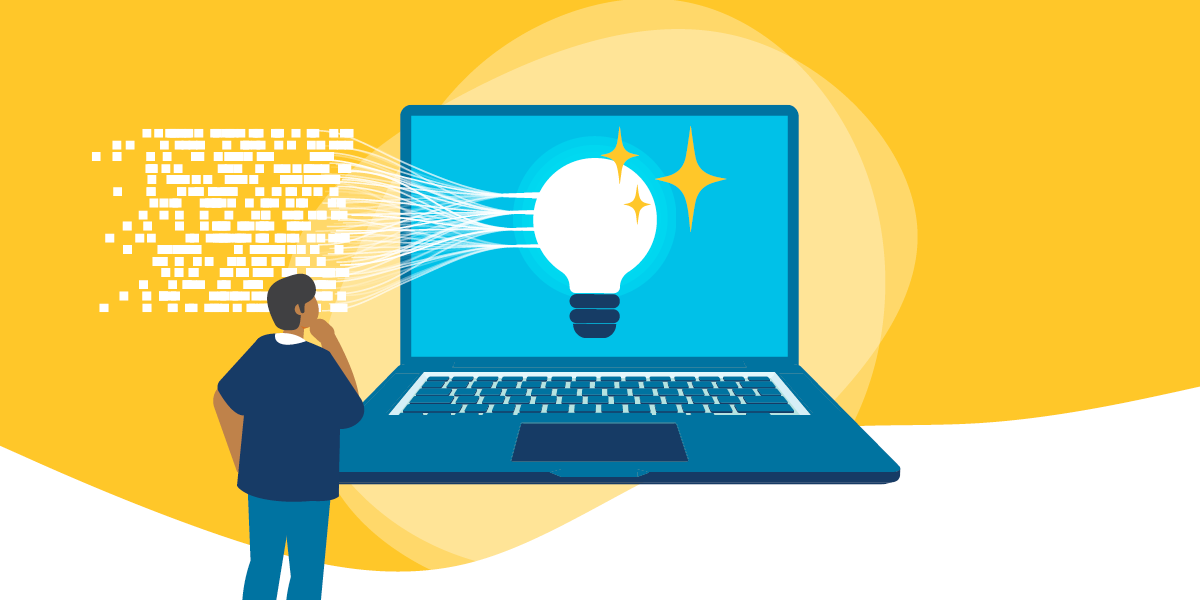Here are TechSoup's library tech predictions for 2019. We forecast patron interest in controlling their privacy, particularly for Facebook, how to deal with the now universal fact of cyberbullying, graphic design trends, the state of fake news, tips on updating your media lab and makerspace and, as always, our favorite bleeding-edge tech you'll want to be super careful with. All that plus Ida Joiner's LITA Top Technology Trends Committee predictions. Get ready for 2019!
Privacy
Patrons will finally be interested in taking some control of their online privacy. At the same time, legal structures are being put in to place to protect consumer information. We're getting much better clarity on the perils of not paying attention to our digital identity. For example, see Visual Capitalist's revealing infographic, The Data Big Tech Companies Have on You. The incessant media coverage of Facebook's privacy failures is the main reason for the jump in interest, though. ZDNet's Larry Dignan and company report, "Folks who dropped the social network in 2018 are just the beginning of a mass exodus. By 2023, Facebook will be renamed Instagram. And by 2028 we won't remember either."
Pew Research found that in 2018, some 74 percent of Facebook users either adjusted their privacy settings, stopped checking their account for a period of several weeks, or deleted the app from their phone entirely. They also found that young adults who use Facebook are particularly likely to have deleted the Facebook app from their phone. However, just 12 percent of users 65 and older say they have deleted the app in the past year. Young adults are migrating to Snapchat and Instagram.
Here are some resources for patrons interested in improving their privacy:
- How to set your Facebook settings to maximum privacy
- How to get all your stuff out of Facebook before deleting it
- How to permanently delete your Facebook account
- How to optimize the Google Chrome browser for maximum privacy
On the policy level, U.S. Sen. Brian Schatz of Hawaii has introduced federal legislation that would make large companies that collect our data legally liable for handling it responsibly. California has already passed similar legislation called the California Consumer Privacy Act of 2018.
Cyberbullying
Pew Research finds that majority of U.S. teens (59 percent) have experienced some form of cyberbullying. Nearly half of teens ages 13 to 17 say they have been called offensive names online or on their cellphone, and a third say they have had false rumors spread about them. Online harassment is now a near-universal problem that affects teenage patrons.
Here are some resources for teenage patrons and parents struggling with cyberbullying:
On an allied topic, The New York Times' Brian X. Chen recommends well-developed smartphone parental control apps like Screen Time for iPhone and Google's Family Link for Android to control screen time and remotely monitor children's smartphone activity.
Graphic Design Trends
It's not easy for all of us to be slaves to fashion, but in the web design and social media world, it's at least useful to know what will be expected of us in our images and look. Social Media Today has helpfully published an infographic on how we should appear online in 2019 with examples of things like pops of vivid color, futuristic color palettes, abstract patterns, complex gradients and duotones for our backgrounds, and fun hand-drawn illustrations.
Fake News and Fake Information
How much of the Internet is fake? It turns out, a lot of it, and it is getting worse. New York magazine's Max Read recently discovered that less than 60 percent of web traffic is now human. On Twitter, bots may be behind more link sharing than human beings. Many Internet metrics are fake, as are people, businesses, content, and politics. In the coming year, patrons may need a new crash course in Internet literacy to decipher what is real and what is not. In addition, your audience for your online communications will increasingly crave authenticity in your personal and unique voice.
The Printed Book Shall Continue to Rise Again
NPR's Marketplace reports that e-books have declined in popularity in recent years. According to the NPD Group, sales peaked in 2013 and dropped nearly 30 percent by the end of 2018. Surprisingly, the shift is being driven by younger readers. Jim Fetherston, president of the Book Manufacturers' Institute, says that for the first time in a decade, the book manufacturing industry is seeing more demand than it can supply.
The current polarized political climate has been very good for print publishing. Political book sales have led growth in U.S. nonfiction print book sales. This trend should hold for 2019. The larger long-term trend of readers preferring printed books to e-books will continue as well.
The Bleeding Edge: Facial Recognition Is Coming of Age
Facial recognition is a type of sophisticated biometric technology that photographs people and then uses statistical measurements to determine their identity almost instantly. Applications like Amazon's Rekognition are already in use by events companies like Ticketmaster to identify attendees. Police departments, airports, and even restaurants use the technology. The restaurant chain CaliBurger uses it to remember customers' past orders. The technology is easy enough to implement now. A Chinese high school in Hangzhou is using facial recognition technology that scans students every 30 seconds.
Libraries could consider this technology as a tool to simplify access to buildings, resources, and services. Facial recognition has the potential to replace traditional library cards. By using the technology, librarians will know as soon as individuals walk into the library who they are, where they live, what books they have checked out, and if any of their books are overdue.
The ALA brief on facial recognition, recognizes that the technology is already raising ethical concerns that might go against the core values of libraries, including intellectual freedom, privacy, equitable access, and diversity. Tech companies, such as Microsoft, have argued for governmental regulation of facial recognition. Microsoft's president and chief legal officer Brad Smith compares the technology to medicine and cars in its need for regulation, stating that "a world with vigorous regulation of products that are useful but potentially troubling is better than a world devoid of legal standards." Washington Post writer Ben Sobel goes further, saying that the technology, now in wide use, may not even be legal.
Libraries Should Be Tech Risk Averse
The chief digital officer of New York Public Library, Tony Ageh, was recently in Seattle to talk about libraries' digital transformation. He maintains that "libraries have been very reluctant to move too quickly and have allowed the marketplace and allowed other organizations to kind of prove things work before libraries have taken the plunge." He thinks this wait-and-see behavior generally suits libraries well. On Ageh's list of proven digital services a library can provide are loanable Wi-Fi hotspots. Patron privacy is another area of great concern for NYPL. See Geekwire's interview with Tony Ageh here, which includes his vision of the ideal future library.
Updating Media Labs and Makerspaces
Now that maker programs are in most public libraries, patrons are getting used to being exposed to new technologies like 3D printers, design software, virtual reality platforms, and audio and video editing. If your library has been offering those services for a while, it may be time to upgrade to some new-generation tech.
- For 3D printer recommendations, see PC Magazine's The Best 3D Printers for 2019. Consumer models like the Flashforge Finder 3D Printer start at $300. ZDNet's David Gewirtz recommends the more expensive LulzBot Mini 2 that prints on different types of materials.
- For VR recommendations, check out PC Magazine's Best VR (Virtual Reality) Headsets for 2019.
- For additional product and programming ideas have a look at Makerspaces.com, MakeyMakey.com, makercamp.com, and YOUmedia.org.
- For libraries still without a media lab, See librarian Liz Hickok's recommendations for building a media lab on a shoestring.
Finally, WebJunction is expanding its IMLS-funded Small Libraries Create Smart Spaces project. This is a grant program to help 15 rural libraries transform a space in their library to encourage more hands-on, participatory, active learning. Selected libraries will get up to $5,000 in federal grant funds to create smart spaces.
Ida Joiner's Top Technology Trends Committee Predictions for 2019
Ida Joiner is a member of ALA's Library and Information Technology Association (LITA). The LITA Top Technology Trends session at the ALA Midwinter Meeting 2019 in Seattle will be on Sunday, January 27, 2019.
5G Communication
5G will explode in 2019. 5G is the fifth generation of cellular mobile communications that will connect many devices to the Internet. According to experts at PC Magazine, one of the biggest uses for 5G will be in virtual and augmented reality. Phones will transform into devices meant to be used with VR headsets. The very low latency and consistent speed of 5G will provide an Internet-augmented world. Driverless cars may utilize 5G to really take off as well since the first generation of driverless cars will be self-contained. However, future generations will interact with other cars on smart roads.
Wearable Technology and Healthcare
Wearable technologies based on artificial intelligence (AI) for healthcare will continue to grow in 2019 and beyond. Imagine high-tech devices that can track our health, diagnose our illness, offer a treatment plan, and if necessary perform the medical procedure. For example, a device might measure your glucose level without drawing blood, detect breast cancer through an implant worn in a bra, and administer antidepressants through a headband. The wearable device market is expected to nearly quadruple to 430 million according to the market intelligence company Tractica.
Drones
The use of drones in a myriad of ways will continue to grow in 2019. Patrons will be more interested in them than ever. Experts at Inc. magazine predict that 2019 will be the year that commercial drone integration really takes flight. In 2019, we will continue to see the impact of these innovations across industries as well as changes in regulatory policies. Drone usage in classrooms and libraries will increase in 2019 also.
Ida Joiner is an author, technologist, educator, and librarian. She currently serves as the senior librarian at the Universal Academy in Irving, Texas. Ida just published her first book, Emerging Library Technologies: It's Not Just for Geeks (Elsevier, August 2018).
TechSoup Resources
Mobile Beacon hotspots are perfect for public libraries to offer loanable Wi-Fi hotspots to patrons. They provide 4G LTE broadband Internet connectivity for up to 10 computers or Wi-Fi-enabled smartphones and tablets. They work anywhere you can receive a Sprint signal. A single hotspot is available to U.S. public libraries for an $18 admin fee. Ten are available for a $108 admin fee. Each hotspot requires a Mobile Beacon 4G LTE service plan at the current nonprofit pricing of $120 for 12 months of unlimited service.
Autodesk has just opened its donation program to public libraries. This offer includes four design suites including Autodesk's Architecture, Engineering & Construction Collection. This software creates 3D building designs. Autodesk Media and Entertainment Collection is also available. This design suite creates 3D animations and effects. TechSoup library members can request up to 10 subscriptions of any combination of Autodesk products. The admin fee is $99 for each yearly subscription.







